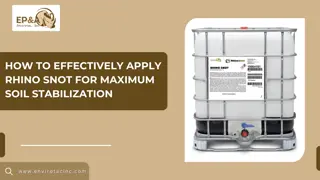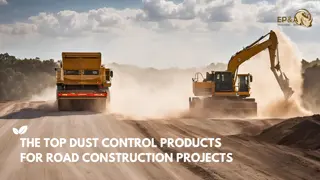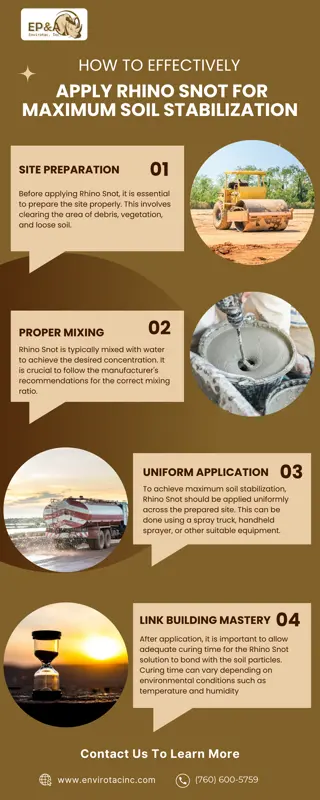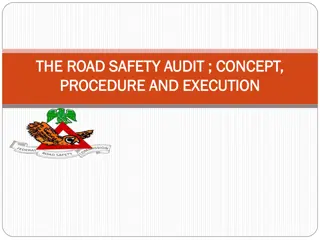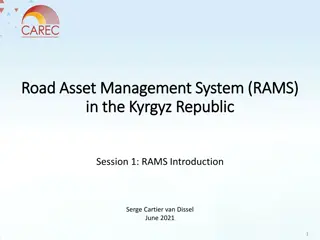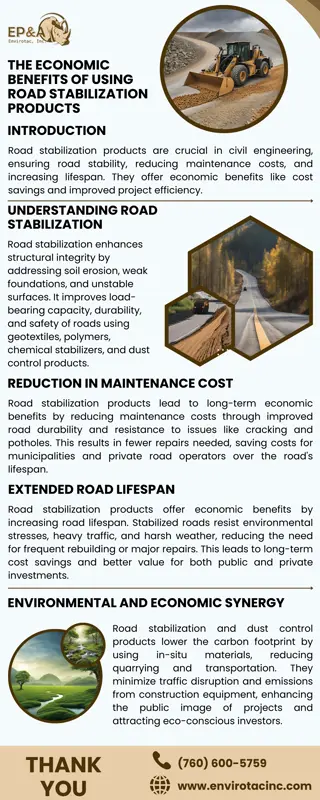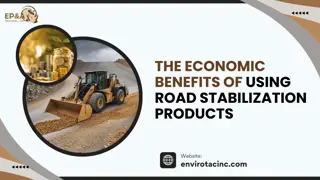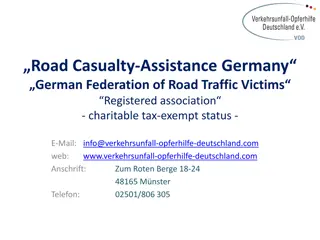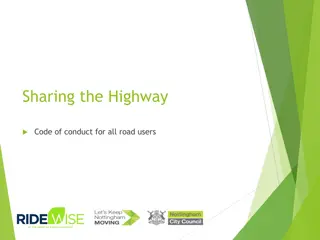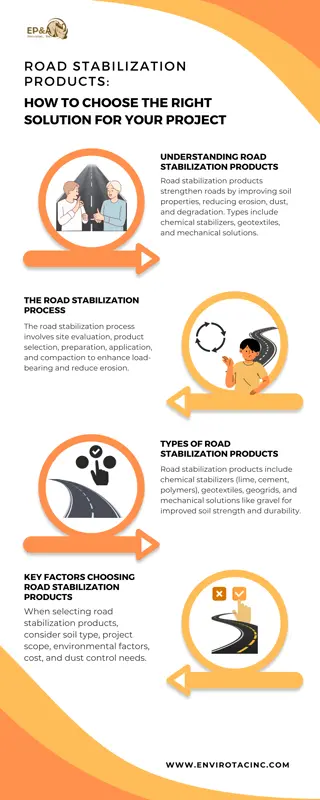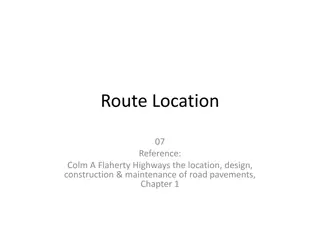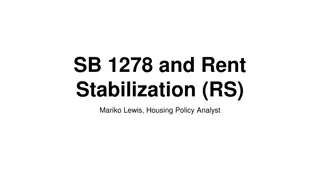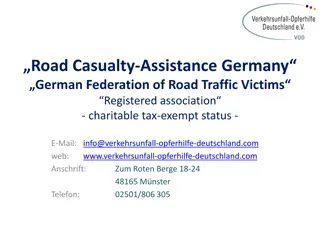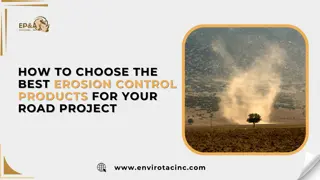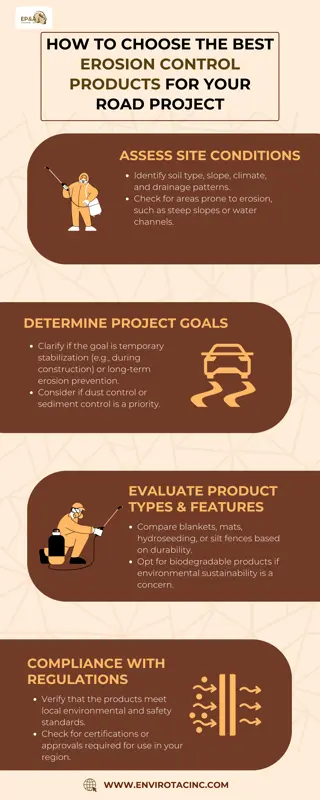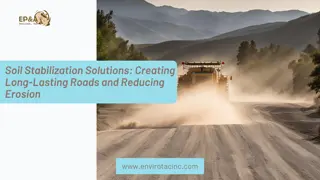
Road Stabilization Products: How to Choose the Right Solution for Your Project.1
Learn how to select the right road stabilization products for your project by understanding soil type, project scope, environmental factors, and cost to ensure long-lasting road durability.n
Download Presentation

Please find below an Image/Link to download the presentation.
The content on the website is provided AS IS for your information and personal use only. It may not be sold, licensed, or shared on other websites without obtaining consent from the author. If you encounter any issues during the download, it is possible that the publisher has removed the file from their server.
You are allowed to download the files provided on this website for personal or commercial use, subject to the condition that they are used lawfully. All files are the property of their respective owners.
The content on the website is provided AS IS for your information and personal use only. It may not be sold, licensed, or shared on other websites without obtaining consent from the author.
E N D
Presentation Transcript
ROAD STABILIZATION PRODUCTS: HOW TO CHOOSE THE RIGHT SOLUTION FOR YOUR PROJECT This article will take you through the road stabilization products, the road stabilization process, and how to select the best solution for your project. www.envirotacinc.com +(760)-600-5759
INTRODUCTION Did you know that almost 60% of the roads worldwide are unpaved? Many of them degrade at an alarming rate without adequate stabilization. This problem indicates the need for road stabilization products to ensure long- lasting road strength and safety. Whether you have a small country road or massive infrastructure, the difference it makes depends on the right road stabilization products.
UNDERSTANDING ROAD STABILIZATION PRODUCTS Road stabilization products strengthen roads by improving soil properties, binding particles to reduce erosion, dust, and surface degradation. These products include chemical stabilizers, geotextiles, and mechanical solutions, each offering specific benefits based on soil type and environmental conditions.
THE ROAD STABILIZATION PROCESS The road stabilization process involves applying products to enhance load-bearing capacity and reduce erosion on the road surface. Site evaluation involves assessing soil type, environment, and factors like rainfall, temperature, and traffic volume. Stabilization products are selected based on site analysis, considering dust and erosion control needs.
This may be different based on various stabilization products that would be used, but the objective remains the same to stabilize, strengthen, and make the road safer. Preparation Application Compaction and Finishing Stabilized soil is prepared through grading and leveling, sometimes combining existing materials with new stabilization products to enhance efficiency. Stabilization products are applied by proper techniques such as spreading chemical additives or laying down geotextiles. Compaction of soil after the application of the product to provide a stable, solid pavement. The road is then finalized to reach the desired specifications.
TYPES OF ROAD STABILIZATION PRODUCTS Given the fact that there are thousands of stabilization products for roads, it might become quite difficult to find the right product for your project. So, here's the first major division of major types to make you understand what might work for your project.
1. CHEMICAL STABILIZERS Chemical stabilizers are, without a doubt, the most common strengthening additive for structural road stability. It is because chemical stabilizers alter the properties of the soil. Such products are: Lime: Lime is used on clay-rich soils to lower moisture content and increase soil strength. Polymers, Enzymes: These newer products bind soil particles, enhancing both durability and flexibility. Cement: Cement-based stabilization provides a strong, concrete-like surface, ideal for high-traffic applications.
2. GEOTEXTILES AND GEOGRIDS Geotextiles and geogrids are polymer-based products providing mechanical stabilization by reinforcing soil. Geotextiles are porous fabrics that prevent soil erosion while allowing water passage, whereas geogrids are grid-like structures that strengthen weak soils, distribute loads uniformly, and extend road lifespan. These products are particularly suitable for high- traffic areas or poor soil.
3. MECHANICAL STABILIZATION SOLUTIONS Mechanical stabilization often involves incorporating gravel or crushed rock into the soil. This method provides immediate structural improvement and is especially useful in remote areas where chemical solutions may not be viable. It also works well in conjunction with other soil stabilization products for added effectiveness.
KEY FACTORS TO CONSIDER WHEN CHOOSING ROAD STABILIZATION PRODUCTS Selecting the right road stabilization products can be daunting, but considering the following factors will help simplify your decision: SOIL TYPE: PROJECT SCOPE: ENVIRONMENTAL: COST: DUST CONTROL: Not all stabilization products suit every soil type; lime works for clay, while geotextiles suit sandy soils. Project size determines product choice: large projects need cement or geogrids. Weather factors, like rainfall and temperature, affect stabilization product performance. Prices vary by product and project size; geotextiles are cost-effective for larger projects. Choose dust- controlling stabilization products for both dust reduction and structural benefits.
CONCLUSION Choosing the right road stabilization products is crucial for a successful, long-lasting project. Make informed decisions based on soil, environmental conditions, and project needs to strengthen roads and reduce long-term maintenance costs. Invest wisely for durable infrastructure. Invest in the right stabilization products today for durable roads that benefit both current and future generations.
THANK YOU FOR YOUR ATTENTION CONTACT US: www.envirotacinc.com +(760)-600-5759



